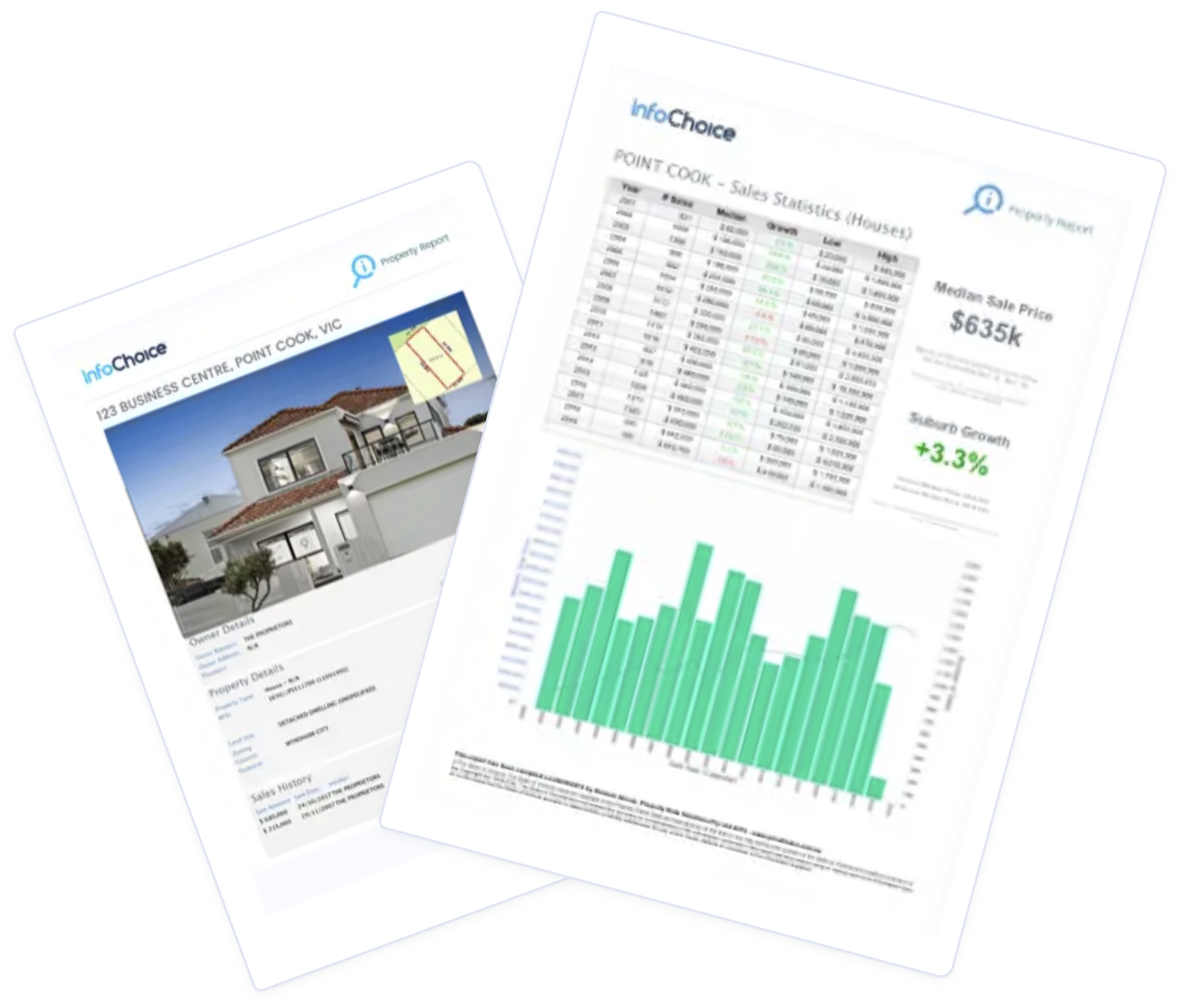
When taking out a home loan, most borrowers face a familiar choice: a fixed interest rate for stability or a variable rate that fluctuates with the market. While either option can suit different financial strategies, some borrowers looking for customisation may opt for a third path - the split home loan.
By dividing the loan into fixed and variable components, this option offers a blend of certainty and flexibility, appealing to those who want to manage risk without sacrificing potential savings.
What is a split home loan?
A split home loan allows borrowers to split their mortgage into two separate loans - one portion is charged interest at a fixed rate, while the other portion is charged at a variable rate. The size of each portion is up to you. A split home loan doesn’t have to be divided equally. Many lenders allow you to customise the split - for example, allocating 60% to a variable rate and 40% to a fixed rate.
Essentially, split home loans allow borrowers to reap the benefits of both the security and certainty of a fixed rate loan (budgeting and repayments) and the flexibility of a variable rate loan (no cap on extra repayments, offset accounts, etc).
See Also: Split Loan Calculator
How does a split home loan work?
To illustrate how a split home loan works, consider the following example.
Let’s say you take out a $500,000 loan with a 30-year term and decide to split the loan 60:40. You fix $300,000 at 6.50% p.a. for a 3-year fixed period, and put the remaining $200,000 at a variable rate of 6% p.a.
Your monthly repayments would come to approximately $3,095. This combines:
-
Fixed repayment: $1,896 per month
-
Variable repayment: $1,199 per month
Let’s say in eight months' time, the market changes and your lender increases your variable rate to 6.40% p.a. Your monthly variable repayments would increase to $1,251, making your total monthly repayments $3,147.
The interest rate on your fixed portion will remain the same for the duration of the term, regardless of whether your lender increases interest rates or the cash rate changes. This shelters at least a portion of your total home loan against interest rate fluctuations.
Once the fixed term ends, you will be switched over to a standard variable rate unless you lock in a new split loan. This rate could potentially be higher than the current variable rate of your split loan.
Interestingly, this situation can result in having two distinct variable home loan interest rates for the remaining loan term (or until you decide to refinance the entire loan to a single rate), which can be quite confusing.
Consider checking your lender’s policy for what happens at the end of the fixed term.
Pros and cons of split home loans
Pros of split home loans
A split rate home loan can be a good option for the indecisive borrower who wants to make the most of what a fixed and variable rate has to offer. Here are some of the benefits to consider:
-
Flexibility: You decide on the portion - it can be set up to suit your preferences and needs.
-
More features: On the variable portion of the loan, you may have access to certain features such as an offset account, redraw facility, and/or the ability to make unlimited extra repayments without charge. These features could allow you to pay off your mortgage faster and save on interest costs in the long run.
-
Security: If interest rates rise, the repayments on your fixed portion will stay the same, and rather than roll the dice on the variable market, you get surety on some portion of the loan with a fixed rate.
-
Benefit from interest rate drops: Should interest rates fall, the variable rate on your home loan may decrease, thus reducing your repayments on that portion.
Cons of split home loans
While there are many advantages to a split home loan, there are also some drawbacks to keep in mind:
-
Interest rates rise: If interest rates increase, your variable repayments are likely to rise as well which can make budgeting difficult.
-
Interest rates drop: While splitting your loan can help guard you against rate hikes, it also means you won’t fully benefit if rates decrease (on the fixed portion).
-
Fees: If you choose to break your fixed rate portion, you may incur break fees. There is also the possibility you may have to pay twice as much in account-keeping fees.
-
Less choice: Not all lenders offer split loan facilities.
-
Budgeting can be harder: Having two separate mortgage repayments of different amounts could make things complicated for budgeting purposes, especially if the payments come out on different days.
How to apply for a split home loan
The process for applying for a split home loan is similar to that of applying for a standard home loan. But there are a few extra considerations to keep in mind, especially when deciding how to divide your loan between fixed and variable interest rates.
Whether you’re a first-time buyer or are refinancing an existing mortgage, here’s a step-by-step guide to help you navigate the process:
1. Identify how you want to divide your split loan.
Before applying, it’s important to understand how a split loan works. Determine how you want to divide your loan in a way that lets you balance the predictability of fixed repayments with the flexibility and potential savings of a variable rate.
Ask yourself:
-
How much of the loan do you want to fix vs keep variable?
-
What features are important to you - like offset accounts or redraw facilities?
2. Compare lenders and loan products
Not all lenders offer the same flexibility with split loans. Some allow you to split the loan 50/50, while others may offer more tailored ratios. Look out for:
-
Interest rate differences between the fixed and variable portions
-
Break costs on fixed loans
-
Fees associated with splitting the loan
-
Extra repayment options on both portions
Below is a side-by-side breakdown that can help you understand how split home loans stack up against other options so you can decide which structure best suits your financial goals and borrowing style.
| Lender | Home Loan | Interest Rate | Comparison Rate* | Monthly Repayment | Repayment type | Rate Type | Offset | Redraw | Ongoing Fees | Upfront Fees | Max LVR | Lump Sum Repayment | Extra Repayments | Split Loan Option | Tags | Features | Link | Compare | Promoted Product | Disclosure |
|---|---|---|---|---|---|---|---|---|---|---|---|---|---|---|---|---|---|---|---|---|
5.29% p.a. | 5.33% p.a. | $2,773 | Principal & Interest | Variable | $0 | $530 | 90% |
| Promoted | Disclosure | ||||||||||
5.19% p.a. | 5.10% p.a. | $2,742 | Principal & Interest | Variable | $0 | $0 | 80% |
| Promoted | Disclosure | ||||||||||
5.39% p.a. | 5.43% p.a. | $2,805 | Principal & Interest | Variable | $0 | $530 | 90% |
| Promoted | Disclosure |
3. Speak with your mortgage broker or lender
A broker can help assess whether a split loan aligns with your financial goals, and they can do the legwork in finding the right loan product. Alternatively, you can approach lenders directly. Either way, you’ll likely need to provide:
-
Proof of income (payslips, tax returns)
-
ID and residency status
-
Details of existing debts and assets
-
A breakdown of your living expenses
4. Get pre-approval
Many borrowers choose to seek home loan pre-approval first, helping to speed up the overall process. This gives you a clearer picture of your borrowing power and shows sellers you’re serious. During pre-approval, discuss your interest in a split loan structure with the lender so they can tailor your options.
5. Submit a full application
Once you’ve chosen your lender and split ratio, you can submit a formal application. You’ll specify how the loan will be split and confirm details like the fixed rate term (e.g. 2, 3, or 5 years) and any special features you’d like on the variable portion.
After this, your lender will conduct a property valuation (if buying or refinancing), finalise your assessment, and issue a formal loan offer.
How do you decide on the split amount?
Not sure what percentage of your loan you want to split between fixed and variable? You could consider the following factors.
1. Interest rates
If the fixed rate is lower than the variable rate, you may opt to allocate a larger portion of the loan balance to the fixed rate in order to minimise interest expenses, or vice versa.
2. Budgetary needs
If you value greater financial stability, you may decide to fix a larger portion of the loan to mitigate the impact of potential rate increases. However, it's worth noting that if rates decrease, you won’t be able to benefit from this on a fixed rate.
3. Offsetting interest
If your loan's variable portion comes with an offset account, it's important to consider the funds you plan to have in this account when determining the ratio of the loan.
What kind of borrower suits a split home loan?
A split home loan may be suitable for you if you aren’t sure about the current interest rate cycle - you feel there may be rate hikes on the way. Or, you’re just after accessing the best of both worlds.
Generally, split home loans can be an option to consider in the following circumstances:
-
You need a degree of repayment certainty
-
You don’t want to be totally (100%) locked into a fixed rate if rates fall
-
You’re looking for both security and flexibility
-
Longer-term interest rates are forecast to rise


